The power of the serpent of Egypt was broken on the cross – Justin Martyr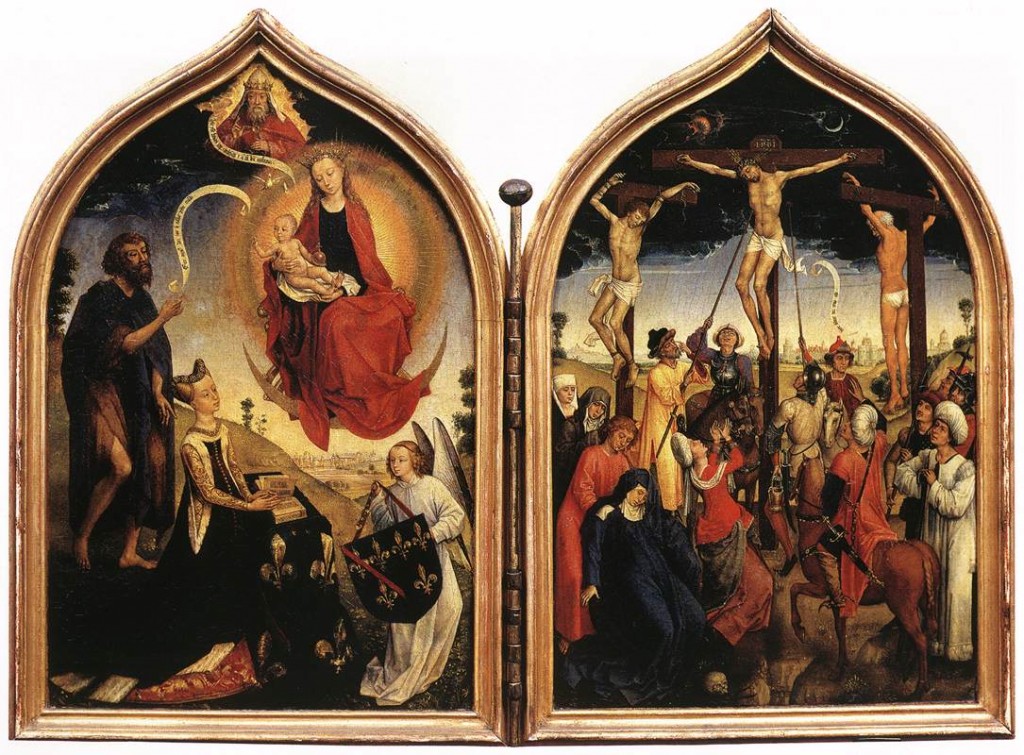
Let it be said, that long before the Romans had given us the images and idols of the Lord and Savior of Jesus crucified upon the cross, the serpent or snake was the chosen image by the ancient wise people of the not so distant past as their savior. In fact, the ancient Romans had used to carry forth the serpent in war, and one of their standards was the serpent on a pole. St. Augustine tells us, that the image of Christ and his Cross was the new ensign of Christian Warfare that the Romans had carried before them; being the Ensign or Profession of their Warfare. Hence as Jesus had said, “I come not to bring peace, but to bring a sword” (Matthew 10:34)
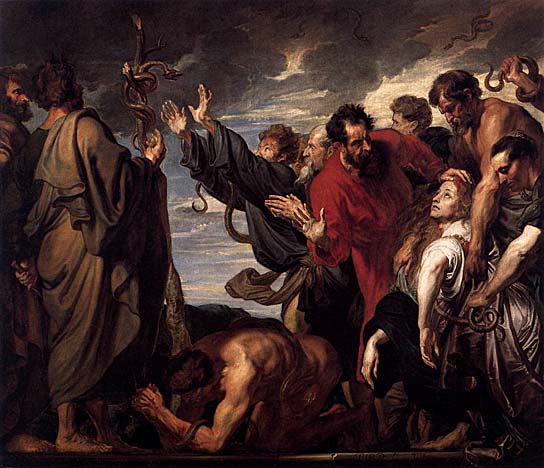 The ancient serpent-god of the Gnostics from the East was Serapis. The various spellings of the name Serapis are, Sor-apis (Σέραπις, Attic/Ionian Greek), Sarapis (Σάραπις, Dorian Greek), Serapin (Greek Ὄφις), or in Hebrew, Seraph. All these names mean ‘serpent.’ The name ‘seraphim’, is the plural form of serpent and is also said to mean, “the burning ones.” Serapis is the Hellenized version of the Egyptian Osiris-Apis.
The ancient serpent-god of the Gnostics from the East was Serapis. The various spellings of the name Serapis are, Sor-apis (Σέραπις, Attic/Ionian Greek), Sarapis (Σάραπις, Dorian Greek), Serapin (Greek Ὄφις), or in Hebrew, Seraph. All these names mean ‘serpent.’ The name ‘seraphim’, is the plural form of serpent and is also said to mean, “the burning ones.” Serapis is the Hellenized version of the Egyptian Osiris-Apis.
“Be ye wise as serpents”
Serapis is the serpent on the cross that was also the precursor to the Christian Christ, who would take the serpents place upon the cross in this Sixth Age under the religion of Christianity. Before the Christian era, the most ancient worship of the serpent was practiced in many areas of the world. The serpent on the cross was still worshiped up to the 7th century in England under the Druids. Tacitus, the Roman senator and historian had said, that Serapis was worshipped as a type of universal deity that represented Jupiter, Osiris, Pluto, and sometimes Jupiter Ammon. The cult of Serapis had originated from the Greco-Egyptian priesthood under the Ptolemies, and the testimony of Pausanias says the temples of Serapis were the most famous at Alexandria, and the most ancient at Memphis.
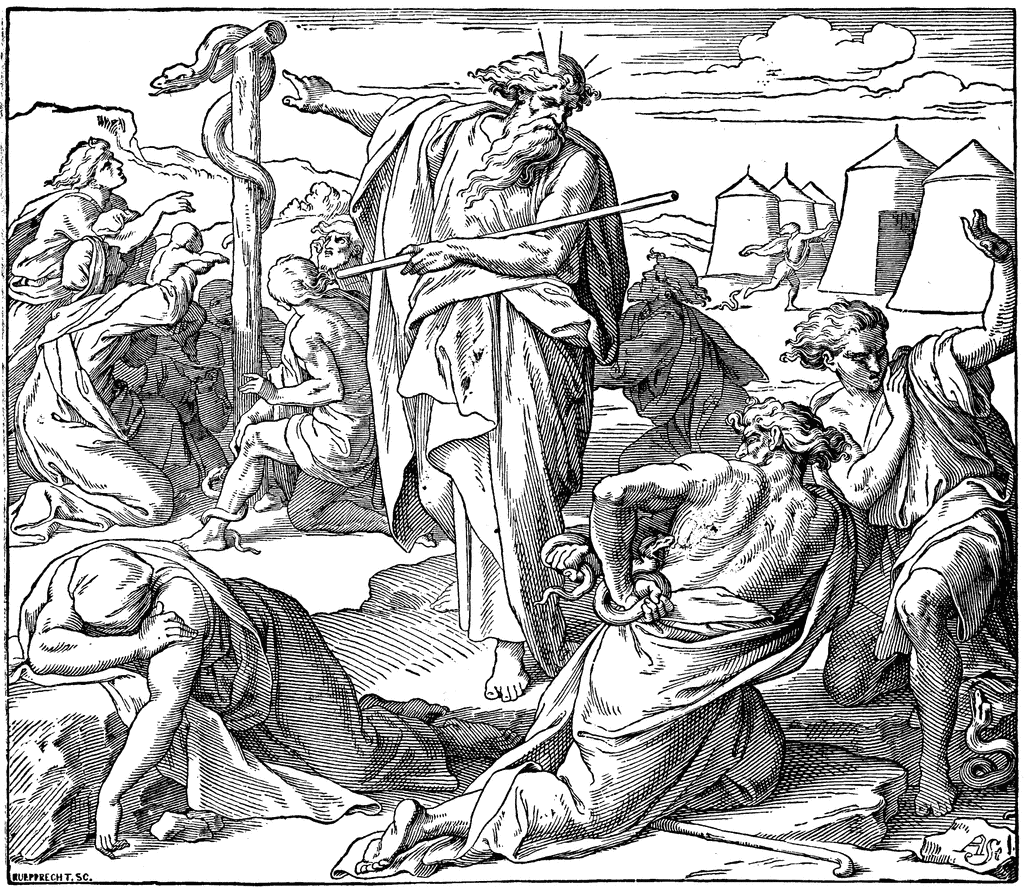 With the symbol of Jesus, St Mark informs us, “With the form of a serpent, He kills the serpent, for the serpent made out of the rod swallowed up the other serpents.” This symbolic event is further explained in St Augustine’s sixth sermon where he said, ” the serpent signifies death, and that Moses’ rod was changed into the serpent because our Lord took upon himself death for us.”
With the symbol of Jesus, St Mark informs us, “With the form of a serpent, He kills the serpent, for the serpent made out of the rod swallowed up the other serpents.” This symbolic event is further explained in St Augustine’s sixth sermon where he said, ” the serpent signifies death, and that Moses’ rod was changed into the serpent because our Lord took upon himself death for us.”
Prior to the 15th century A.D., most people were unlearned and they could neither read or write. The main educated class were usually those fortunate souls who were born into current ruling royal stock. This is why symbols and picture were often the preferred method in which the priesthood and government would educate the people about their religion, gods and history. The Father of English History and Doctor of the Church, Saint Bede who had lived during the 7th century and at the time of this transition from the Old Testament serpent on the cross, to New Testament Jesus on the cross; calls these images, “executed with wonderful art and wisdom.
Some bishops of the church had disagreed with this symbolic method of idolatry type education, such as when the Bishop of Marseilles; Serenus had broken these idols. In the book, “An English-Saxon Homily on the Birth-day of St. Gregory,” By Aelfric (Abbot of Eynsham), he relates the story of Gregory the Great who had declared in his Epistle to Serenus, speaking of those Images which that Bishop had broken;
who know not Letters , may at least be able to read, by looking upon the Walls, what they are not capable of reading in Books. Wherefore, your Brotherhood you’d both preserve them, and hinder the People from adoring them. That sa f1 those who cannot read, may have, from whence to gather some Knowledge of History: And the people be, by no means, permitted to Sin, by the Adoration of a Picture.
Bede had further explained, “A Cross of Silver, and the Image of our Saviour in a Picture. ‘In this manner, Augustine and his Followers are described by Bede, to have come into the Presence of King Æthelbert. They bore a Cross for their Banner, Pro Vexillo: hon pro Adoratione, not for Adoration.” A Latin phrase meaning, “As standards: no honors for Adoration.” Hence, there was no homage or worship given to it, but only as St Augustine had said, “his Cross was the new ensign of Christian Warfare.”
But that you may under« sand the Use of the Images of Stints, and of our “Saviour, which our Saxon Ancestors, and who, writing of the Images of things in Solomon’s Temple, expressed himself thus, If it was lawful to lift up the brazen Serpent upon a Pole, which the Children of Israel beholding, were saved alive: why may we net, by a picture, bring into the Memory of the A Faithfuls that sifting up of our Saviour upon the Cross, by which he overcame Death: or those “his other Miracles, and Cures, by which he wonderfully triumphed over the fame Author of Death Since the fight of these things make oftentimes a deep Impression on the Minds of the Beholders, and to those who are ignorant of Letters, open asit were a kind of lively reading, of the History of our Lord. For picture, in the Greek, is called “(secret for you to find out)”, that is, a writing that expresses the Life.
WHAT IS THE MEANING OF SERPENT WORSHIP AND THE SERPENT ON THE CROSS ?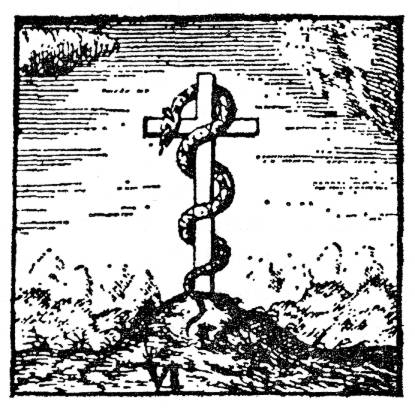
For thousands of years, the serpent or dragon was worshiped by many cultures all around the world. To these ancient people, the serpent had signified wisdom, intelligence, life and rebirth. In a sense, the symbol of the serpent represented Gnosis in the highest sense, which would equate to human godlike status and the equivalent of a Christ or the messiah. However, to modern Christians, the serpent is the devil incarnated and the followers of this ancient wisdom are called Demons. Hence, the 2, 000 year old war between the new savior, Jesus who was the Roman-Jewish messiah of the New Testament (New Law), and the serpent savior who is the prince of Demons of the Greek Old Testament (Old Law).
As Saint John had magically said, “The great dragon was hurled down—that ancient serpent called the devil, or Satan, who leads the whole world astray. He was hurled to the earth, and his angels with him.” – Revelation 12:9
In ancient Greece, the Greatest of all Serpents and the Prince of Good Demons (Angels) was Ophis (Οφιων, Ophiôn, Ophion who had reigned on Mount Olympus with his consort Eurynome). The name Ophis, is Greek for serpent. Author and occultist, HP Blavatsky had written in Isis Unveiled, that the Greeks called Apollo also by the name of Python, which is rendered the same as Ophis, Opis, Oupis, and Oub. Both, Apollo and Ophis were the sons of Zeus who is father of the Gods, father of men, the god of light, truth and prophecy, healing, plague, music, poetry, and more. The followers of Ophis were called the Ophites. Ophis is the Greek equivalent to the ancient Egyptian Apap or Aph-ophis, the Great Serpent who later became Apis, or Epaphus, the Sacred Bull of Egypt. Blavatsky had written, that Apollo and Python, Osiris and Typhon, Christos and the Serpent, are all convertible terms and the followers of this cult that were called Masters of Wisdom, and all Initiates into the Sacred Mysteries, are called Nagas, or Serpents of Wisdom. However, I disagree that Typhon would be considered the same as Apollo, Python, or Osiris.
From the Nile in Egypt, the African plains of Ethiopia, the deserts of Arabia, the highlands of Persia, to the plains of Syria, and to the Phoenicians or Greeks of the Mediterranean Sea and their Holy Island of Crete, to the their biblical tribes of Canaan, the land of Scotia, Ireland, Brittain and to the island of the Culdee Druids in Iona; the ancient priesthoods of these people had always venerated the serpent. One of the symbols of both, Hercules and the Celtic Druid Hu was a serpent.
WHAT HAPPENED TO THE SERPENT ON A POLE?
It wasn’t the Jews who had actually symbolically crucified Jesus to the cross at Golgatha (Place of the skull), but Roman soldiers. St. John tells us clearly, that it was the Jews who had cried out “Crucify Him,” and the soldiers who were Roman that executed the orders of the sentence of death. The Jews would be the instigators, and the Romans the executors, which makes them both accomplices.
What had occurred at this time was simple as I had written above. “With the form of a serpent He kills the serpent, for the serpent made out of the rod swallowed up the other serpents.”
Over time, the Romans who were often at war with these various serpent tribes, had realized that in order to subjugate the world, they had to perform magic and rites that would counter attack the religious rites of the people they had wished to conquer. The main tactical magical method they would employ against these people of the serpent, would be to replace or rename their Gods which they would take ownership of under new names and also reverse symbology, and iconography in which Rome’s chosen Caesar’s, martyred Saints and gods would usurp all other old serpent Gods and demons of the Old Testament.
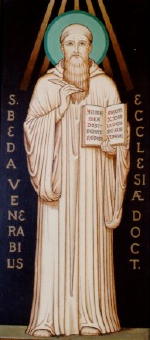 An example of these methods are related to us by the Father of English History and Doctor of the Church, Saint Bede who had lived during the 7th century; in his book, “The Lives of the Abbots of Wearmouth.” Bede tells the story, of how Saint Benedict, in the same time period had made his ‘6th’ and final trip to Rome in order to bring back relics and decorations to Northumbria in Monkwearmouth-Jarrow, for the newly built monasteries of St. Peter and St. Paul which was the main center of Anglo-Saxon learning. The purpose of these relics and art, was to show to people who had visited the monasteries concordance between the Old and New Testaments, how this change from the serpent of Moses to Jesus on the cross as a symbol of Christianity was passed down to us.
An example of these methods are related to us by the Father of English History and Doctor of the Church, Saint Bede who had lived during the 7th century; in his book, “The Lives of the Abbots of Wearmouth.” Bede tells the story, of how Saint Benedict, in the same time period had made his ‘6th’ and final trip to Rome in order to bring back relics and decorations to Northumbria in Monkwearmouth-Jarrow, for the newly built monasteries of St. Peter and St. Paul which was the main center of Anglo-Saxon learning. The purpose of these relics and art, was to show to people who had visited the monasteries concordance between the Old and New Testaments, how this change from the serpent of Moses to Jesus on the cross as a symbol of Christianity was passed down to us.
Soon after the appointment of Easterwine to the abbacy of St. Peter’s, and of Ceolfrid to the direction of St. Paul’s, Benedict had undertaken, and with his wonted prosperity accomplished his sixth and last journey to the city of Rome. Thence he now returned, laden as formerly with a store of ecclesiastical treasures. These, as usual, consisted of a bountiful provision of sacred writings, and an elegant collection of holy pictures. For he brought home on this occasion, the life of our Lord Jesus Christ, described in one series of paintings, with which he beautified the whole interior of the church annexed to the greater monastery, in honour of the virgin mother of God.
For the decoration also of St. Paul’s church and abbey he had procured another set, in which, upon an admirable system, was displayed the concordance between the Old and New Testaments. Of this, to give an instance: Isaac carrying the wood whereon he was ordered to be immolated, and Jesus bearing the cross, on which he died a sacrifice for our sins, are drawn in one piece, and exhibited as corresponding subjects; in a second are paired together, the Son of Man hanging on the cross, and the brazen serpent raised by Moses in the desert.
According to Greek Mythology, eventually the Good Serpent Ophis would be dethroned by his grandfather, the God of chaos 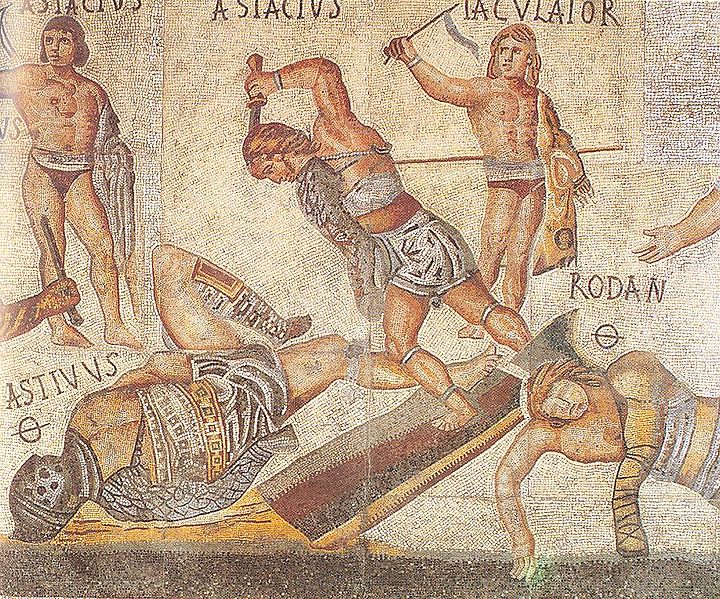 and darkness, Kronos (Saturn or Satan) and the goddess of fertility and war, Rhea (Saturn’s Moon). Hence, the true serpent and dragon of wisdom, Ophis was cast out, and in his place, chaos and darkness would rule under Cronus (Saturn or Satan) and the goddess of fertility and war, Rhea (Saturn’s Moon). This is the reason why, Jesus on the cross is considered by the Fathers of the church, as the standard of Christian warfare and the lower case Greek t, the symbol of death.
and darkness, Kronos (Saturn or Satan) and the goddess of fertility and war, Rhea (Saturn’s Moon). Hence, the true serpent and dragon of wisdom, Ophis was cast out, and in his place, chaos and darkness would rule under Cronus (Saturn or Satan) and the goddess of fertility and war, Rhea (Saturn’s Moon). This is the reason why, Jesus on the cross is considered by the Fathers of the church, as the standard of Christian warfare and the lower case Greek t, the symbol of death.
Based on the testimony of Bede, we can safely date the change of the symbolism, from the Old Testament serpent on the cross, to the son of man, Jesus on the cross for the Anglo-Saxons; it had occurred around the time of Bede in the 7th century, where it had first started in Rome and then later moved to the Anglo-Saxon territories such as Great Britain, England, France, Germany and Spain.

Moe is the founder of GnosticWarrior.com. He is a father, husband, author, martial arts black belt, and an expert in Gnosticism, the occult, and esotericism.

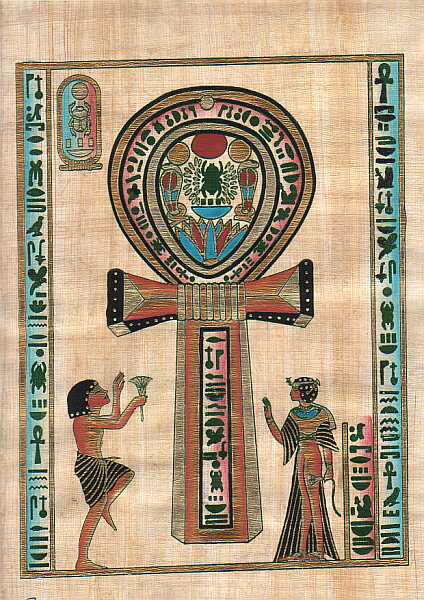

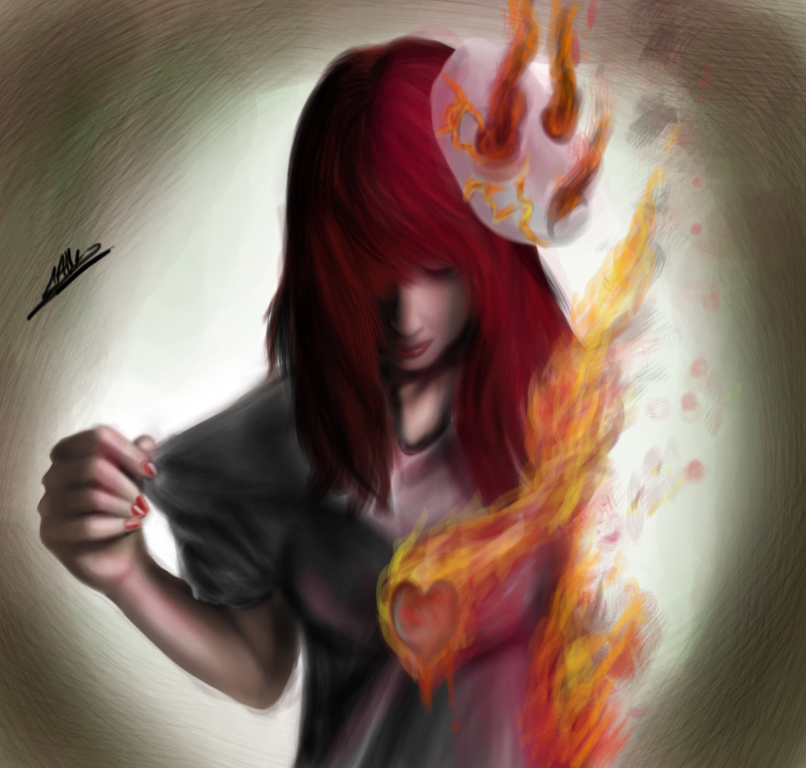
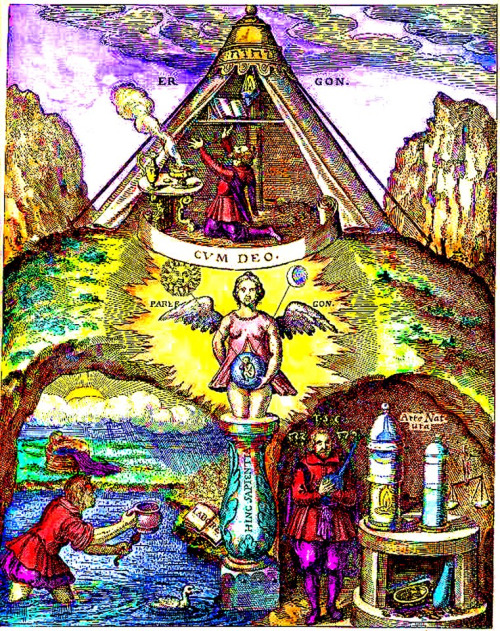
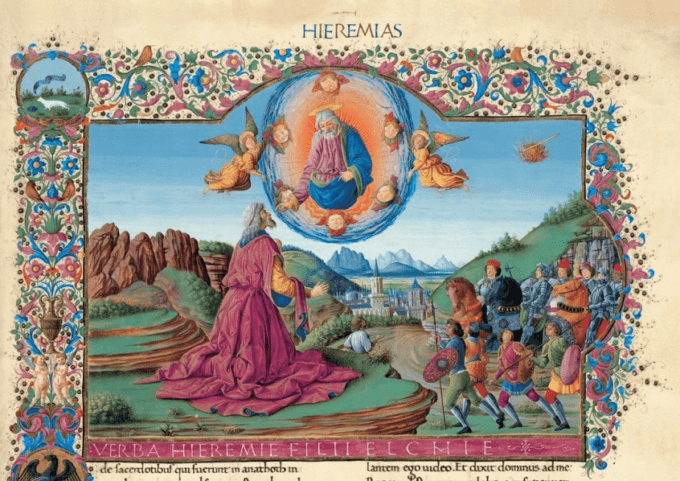


Set or saturn is the Egyptian apis bull el the bull represents saturn . The bull is animated by the Rauch or Ankh , the Rauch the wind air breath of life . It then is reffered to as the moon the spirit animating matter the earth the bull , the moon or bull unites with the fire of the sun sekemet the eye of ra , this is the image of the pharoh Horus who all pharohs were the image . The pharohs were apisis meaning happi ankh , to became an ankh meant to be true of mouth maat kheru , heru, horus . The Egyptians named horus apollo in their own language . Apollo is sah Orion the mighty hunter or warrior before the Lord their patron amon ra the babylonian marduk jupiter .
any of these people who started these religions descend from the same ancient priesthoods which derive from the same tree.
Your absolutly right. I can teach you the Tree. Al
Hi Moe, That tablet taken from Abraham is the sixth tablet of 7, but the first three are doubles so 10 in the whole process. If you check, the rigth side of the Serpent is the same outline as Virgo in the old drawings. I know the whole series and all the times. The Serpent was always the Light. Two of them usually for the two lights, sun and moon. *Im talking about the Secret religion of Egypt, we today call Alchemy. Find all the signs in the Abraham Tablets if you can, some easy, then perhaps you will want to talk more to me. We all have been lied to and we dont know our past and what it is based on, but I do. The process of Alchemy became the life and times of Osiris. That became Christianity. All of it was hidden and destroyed. When known, everything of the past is explained. Al
The moon is the rauch or the ankh the spirit in matter the bull and the sun . The moon eye of horus represents the eternal spirit , he also has a sun eye and a serpent . He has three eyes like shiva . All pharohs were the image of horus , horus is Apollo who is abbadon the destroyer . Apollo is Nimrod the hunter or warrior before the Lord yahweh . Amon Ra , marduk. Its a caste system , the sun and moon the king the moon warrior , kshatreya , the people eat Osiris as a communion his body was bread and wine his blood . He was crucified because he is dyonisis who you see depicted on a cross . He is ba ne djed the ba is the solar plexus chakra chi energy , the will and desire virile ram and the ro or ru the mouth . The chi and ro represent the Ida and pingala nadis of the cadecus . Chi ro is Greek XP christos . He is associated with the five pointed star . That Abraham was lunar caste his father Terah , yerah or Terach was an official in nimrods Court. Horus is nimrod Sah , Orion the hunter . Its an archetype . Osiris is seir and the moon is the apis bull . The Egyptian ptah is strongly associated with the apis bull which gives oracle’s the same as the moon god hubal sin the moon god of the Arabs. Ptahil or ptah is associated with gabriel according to the mandeans . Ptah has sekemet as his consort , who is the eye of ra , sekemet is the eye of horus . Here’s another thing , the serpent is called the ureus , ur means flame or fire , uriel means wisdom of god and the serpent represents wisdom . You will see the magi carved in stone in egypt visiting the new born King Horus . Oh and the hyk of egyptian hyksos means heka magic as in the power of words or incantations . Apollo is hekatos his female version is hecate .
Targeting only CHRISTIANITY is cowardice .Guys, have the guts to target all three monotheist religions and the genius to build an universal one .In my understanding Gnosticism and dialectical materialism encompassing Budhism and Taoism will do the job.
If Ahaz made the prophecy of the virgin and he worshipped Molech and Jesus came to fulfill his prophecy does that mean followers of Jesus are worshipping Molech?
Obviously, the Roman Catholic Church is an elite group that looks out for itself and has been ridiculously cruel throughout history. I’m sure we can all agree that “establishment” Christianity is the same as the hierarchy structure during the Roman period involving the Jewish groups of the Pharisees, Sadducees, ect. The way I see it, they are all the same. It’s nice to talk to other folks and gather thoughts, but it becomes a problem when one uses it for authority and power.
Do I think there’s something wrong with picking one or two days to recognize the One that took upon the sin of the world? Yes, because I try to recognize what Jesus (Yeshua) did everyday. Jesus is God, the Son of God, the Son of Man. He is the Lord of Lords, the King of Kings, and the God of Gods. The trinity is real. Nothing in this world was made without Him.
The book of Enoch even talks about the Son of Man. Whether or not the book is “acceptable” but again, it all boils down to individual belief on accuracy of historical accounts. I personally feel it’s quite amazing yet unpopular by many groups. I’m not sure why more folks don’t refer to the book of Enoch when it talks about the very problem with mankind. The threat that we faced and are currently facing is with fallen angels.
It’s a caste system that pope is identical to the Egyptian pharoh , solar lunar , his priests lunar the laity the stars , they ate Osiris the eucharist , the Egyptian pharoh horus Apollo is also Mithra , Constantine wanted to be seen as the image of mithra . The laity are vaishyas merchants , they get marked on the head with the cross , the mark of the beast the bull el . The pope like the Egyptian pharoh is the mediator between God and the people , their sacraments strongly correlate to chakras . The ophites say that dyonisis is phanes and also mithra . Osiris who is eaten as a sacrament is Dyonisis.
My pleasure! Thanks so much for the kind words and your thoughtful comment on my article Jimmy. To be honest, I believe that Augustus Caesar is the true Roman Jesus and the bible teachings that he gave and events such as his crucifixion are allegorical. Many of these people who started these religions descend from the same ancient priesthoods which derive from the same tree.
In regards to my blog, it takes a lot of research and writing, but it is something I do for my higher self. A calling that I must fulfill. In a sense, I had been asked to recover this history for my ancestors. It’s a long story I may share with you someday 😉
Man Moe…amazing reporting. Once again you leave much to titillate and stimulate the reader.
Like you I have come to realize that there is an amalgamation to all of history. To the victor goes the history…and most is a pack of lies! Propaganda has always been a great weapon in war. But the ‘over time’ work done by the Flavions and Constantine are an absolute work of genius. I know you feel that the Jesus was real and I think you also believe there to be an element of fictional caricaturization. An allegoric Jesus. If stories are true…what does it matter? So a few people may have witnessed it but they are gone. The mythology is what lives on so true or invented the results are the same. I fully understand the Moses staff/snake myth now, thank you. It was to kill the power of the old snake gods and religion and show the new god more powerful. Personally…do I think this was an actual event…NO. But did the story myth do the job intended…YES.
I love all the genius done to kill the old religions. Blending holidays to the same day so Christian, heathen, gentile and all would at least be partying on the same day…as Christianity slowly worked over the years to make it only about Christianity. Putting a circle around the cross to include sun worship. There are so many examples. Cannibal blood sacrifice was also a belief. I love the way they fixed that one with communion…eating and drinking the man god to symbolic rapture and find eternal life…genius…pure unadulterated genius.
The horrific guilt put on you with the Christ story combined with REAL fear, brutalization and genocide was a tremendous propellent that has lasted over 2000 years creating mass phylogenetic illness. Amazing.
A full exhaustive parallel of everything they did to incorporate all religions into one Universal Church would be very interesting…and unbelievable to most…and extremely damaging to Christians.Thanks again Moe…my little pea brain is spinning… Gnosis rules. Where do you find the time and energy to keep up this web page? And why do you do it? I love it.